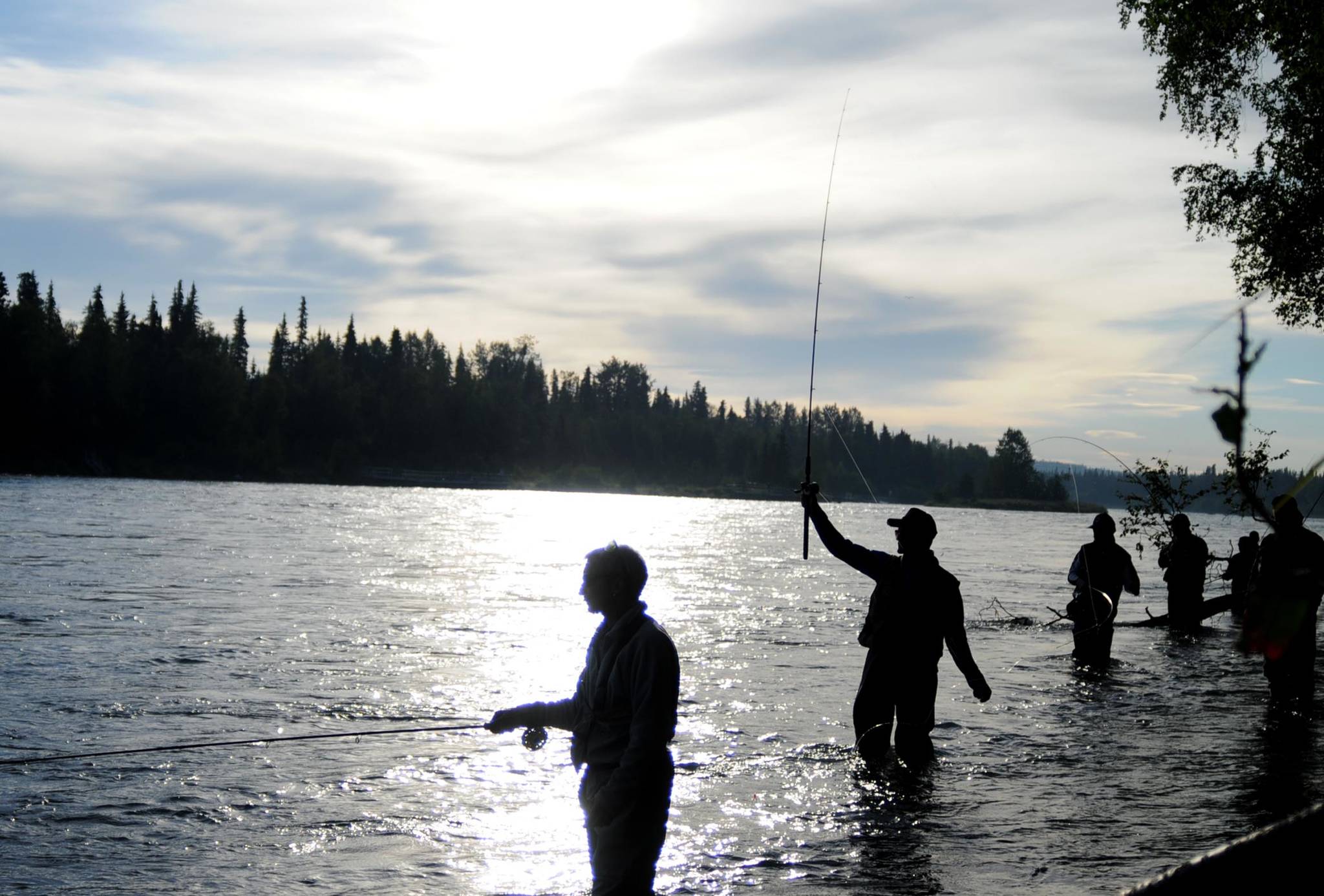More than 562,000 people from outside the state visited the Kenai Peninsula in summer 2016, about 10 times the area’s resident population, according to a recent McDowell Group study.
The study, part of the statewide Alaska Visitor Statistics Program coordinated by the Alaska Travel Industry Association, only counted out of state visitors. About 1.86 million people visited Alaska in summer 2016, more than double the state’s population, according to the report.
On the Kenai Peninsula, most people were headed to Homer and Seward, though a major percentage was headed for Kenai and Soldotna. About a third of the visitors to Kenai and Soldotna said they were going fishing while there, according to the report.
Most of the visitors to Seward came off cruise ships, but it’s also a popular destination for drivers, said Kenai Peninsula Tourism Marketing Council Executive Director Summer Lazenby. Many of the unincorporated communities on the Kenai Peninsula benefit from the popularity of Homer and Seward because there’s only one highway to Homer and one to Seward, along which most of the other communities are spread.
“That’s really helpful, and you’ll notice that the unincorporated communities outdo … some of the other significant areas of Alaska,” she told the Kenai Peninsula Borough Assembly in a presentation Feb. 6.
Most people came for a pleasure trip and the average visitor stayed five nights on the peninsula, versus a total average of 11 nights in Alaska, Lazenby said. About 30 percent of the peninsula’s visitors were returning after a prior visit, she said. The most common origins for Alaska visitors to the peninsula were California and Washington, Lazenby said. Nearly half of all visitors to Kenai/Soldotna and Homer were from the western U.S., according to the report.
“Yes, 70 percent are here for the first time, but we’re so awesome that we bring 30 percent to come back again and again, which I think is phenomenal and speaks to what we have to offer,” she said.
The majority of the out-of-state visitors came by cruise ships to Southeast Alaska. Another major percentage came by air through Anchorage, and a smaller percentage came by highway.
The tourism industry is a major economic driver for the Kenai Peninsula. The average out-of-state visitor spent $333, with the total varying by method of travel and cruise passengers spending very little directly. Lazenby said in part this could be because the cruise packages are coordinated and inclusive.
“A lot of times, cruise passengers get off the boat … they may buy a hoodie, and then they hop the bus, hop the train to Denali,” she said. “That’s an area where we could really maximize additional spending.”
About 2,500 people worked directly in the tourism industry, with about 600 indirect jobs credited to tourism, and about $95 million in wages between the two groups, she said. Comparing it to the Matanuska-Susitna Valley, which has a population of about 101,000 people and 391,000 visitors annually resulting in $98 million in direct spending, the tourism business is a more significant chunk of the Kenai Peninsula’s economy, she said.
That doesn’t include any of the in-state visitors coming down from Anchorage or the Mat-Su Valley for the day, Lazenby said. Kenai Peninsula residents visiting other towns, such as a Soldotna resident visiting Homer for the day, could also be counted as tourists as they use hotels, restaurants and gift shops, she noted. The Kenai Peninsula Tourism Marketing Council doesn’t collect any of its own visitation data and doesn’t have the resources to do so, so they don’t try to account for in-state visitors though are trying to encourage more visitation to round out the early spring and late summer seasons, she said.
“We have dedicated a decent section of our budget to shoulder-season Anchorage marketing to get them out of those three weeks in July to expand them in to September, October and April and early May,” Lazenby said.
There isn’t a good central survey to help determine in-state visitation to the Kenai Peninsula. The City of Kenai gathers data on the visitors to the personal-use dipnet fishery at the mouth of the Kenai River each year, but many visitors all over the state visit the peninsula each year for everything from hiking to watching the Mt. Marathon race in Seward on the Fourth of July.
In Kenai, about 55 percent of the personal-use dipnet participants were Anchorage residents, and about 13 percent are from the Mat-Su Valley in 2017, according to the city’s dipnet report. That’s pretty consistent with past years — Anchorage residents made up about 59 percent in 2016 and 55 percent in 2015.
Lazenby told the assembly the Alaska Visitor Statistics Program is a five-year study, so the next time the data is collected, it will cover the year 2021.
“It’s just a snapshot, every five years,” she said.
The Kenai Peninsula Borough partially funds the Kenai Peninsula Tourism Marketing Council as an economic development organization. Last year, the borough gave $306,000 to the organization, about 10 percent down from the previous year. Kenai Peninsula Borough Mayor Charlie Pierce said at a joint luncheon of the Kenai and Soldotna chambers of commerce that he intended to propose a cut in funding for the borough’s economic development funding in the fiscal year 2019 budget.
Reach Elizabeth Earl at elizabeth.earl@peninsulaclarion.com.

